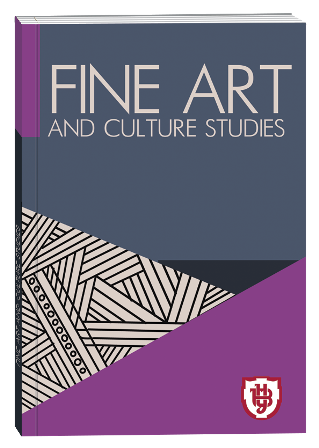INSTRUMENTAL STYLE OF ACCORDION ARTISTRY FROM THE LATE 20TH TO THE EARLY 21ST CENTURY
DOI:
https://doi.org/10.32782/facs-2023-4-6Keywords:
accordion, instrumental style, 20th century, 21st century, contemporary trends, composers, performers, adaptation, classical repertoireAbstract
The article is dedicated to the exploration of the instrumental style of accordion artistry during the late 20th and early 21st centuries – a pivotal moment in the history of this instrument when the traditional perspective on accordion music began to be supplemented with new, contemporary trends. The end of the XX century and the beginning of the XXI century were marked as a period of intense changes in the world of music, especially in the realm of bayan creativity. Influenced by globalization, technological advancement, and societal shifts, the bayan repertoire, performance style, and the very perception of this instrument underwent revolutionary changes. The main objective of the study is to identify the primary changes in interpretation, playing technique, and repertoire that occurred during this period. Starting with an overview of the historical context, the article emphasizes how socio-cultural circumstances influenced the development of accordion music. Numerous composers and performers played a significant role in this process, adapting classical repertoire, integrating folk melodies, and elements of modern music into their compositions for the accordion. The article focuses on the new playing techniques that emerged thanks to the experiments of performers and the needs of modern compositions. Studying various interpretations, from traditional performances to avant-garde approaches, provides a better understanding of how the accordion as an instrument adapted to the demands of the modern era. The article's conclusion summarizes the key changes in the instrumental style of accordion artistry and considers potential directions for further research in this area. In the author's opinion, understanding these trends is essential to assess the current state and future of accordion music in the global musical landscape. The aim of the article is to investigate and analyze the peculiarities of the development of instrumental traditions of accordion music from the late 20th to the early 21st century, as well as to study the main trends, innovations in performance technique, and to identify the influence of cultural, social, and technological factors on the development of accordion creativity and its style. The scientific novely introduces a fresh perspective on the evolution of this musical direction. It deeply and systematically analyzes the stylistic peculiarities and shifts that occurred over the indicated period. Certain novel tendencies in accordion creativity, which had previously remained overlooked by researchers, have been identified and highlighted. Special emphasis is placed on contemporary methods of musicological analysis, which allow for a more profound dive into the nuances of instrumental style. The work considers accordion artistry within a broad cultural-historical context, showcasing how the social, cultural, and technological changes of the time influenced the development of this musical genre. Conclusions. Studying the instrumental style of accordion artistry from the late 20th to the early 21st century has enabled a deeper understanding of the dynamics and multifaceted nature of this period in accordion history. This timeframe was pivotal in shaping the modern face of accordion artistry. Influenced by vast socio-cultural changes, including politics, technology, and globalization, the accordion repertoire transformed, mirroring global musical trends. The adaptation of classical repertoire, integration of folk melodies, and contemporary musical elements highlighted the versatility and multifunctional capacity of this instrument. Changes in playing techniques, the influence of other musical genres, and instruments suggest that accordion masters were actively exploring new avenues for self-expression, experimenting, and breaking musical boundaries.
References
Булда М. Модернізація музичної мови акордеонно-баянних творів сучасних українських композиторiв. Моль і ринок (щомісячний ноуково- педагогічний журнал. 2008. №5. С. 28-29.
Гуменюк Т. Постмодерністська естетика: до визначення поняття. Українське музикознавство (науково-методичний збірник). Випуск 29. C. 236-238.
Давидов М. На шляху самоствердження. Проблеми розвитку інструментального мистецтва в Україні. Київ: Вид-во ім. О.Теліги, 1998. С. 82-86.
Давидов М. Проблеми розвитку народно-інструментального мистецтва в Україні: 36. наук. пр. Київ: Видавництво ім. О. Теліги, 1998. С. 207.
Довгаленко Н. Український музичний авангард у контексті стильових пошуків ХХ сторіччя. Матеріали до українського мистецтвознавства: 36. паук, праць. Київ, 2020. Вип. 1. С. 19-21.
Зубицький В. Межі Майстерності. Музика. Київ. 2018 рік. С. 40.
Павлій Г. Про явище фонізму в мущиці. Українське музикознавство. Вип.19. Київ: Музична Україна. 1984 рік. С. 49-52.
Чернованенко А. Образно-драматургічна роль фактури для баяна другої половини ХХ ст.. 11 Музичне виконавство. Науковий вісник НМАУ ім. П.І.Чайковського. Вип.5. Київ, 2000. С. 146-156.







